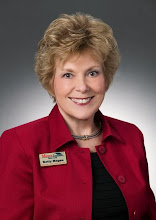Part 2 - Private vs. Public Schools: What's the Difference?
Admissions
Public schools admit all children. By law, public schools must educate all children, including students with special needs. To enroll in a public school you simply register your child by filling out the necessary paperwork.
Private schools are selective. They are not obligated to accept every child, and in many private schools admission is very competitive.
Governance
Public schools must follow all federal, state and local laws in educating children. Such laws usually include specifics about funding, program development and curriculum.
Private schools are not subject to as many state and federal regulations as public schools. Since private schools are funded independently, they are not subject to the limitations of state education budgets and have more freedom in designing curriculum and instruction.
Curriculum
Public schools offer a general program, designed for all children, which usually includes math, English, reading, writing, science, history and physical education. In addition to these key subjects, many public schools offer programs in music and art. In a public school, the substance of what children learn is mandated by the state and learning is measured through state standardized tests.
NOTE: The charter school movement is picking up momentum in many states; these schools are public, but many offer specialized programs and smaller classes.
Private schools have the flexibility to create a specialized program for students. For example, private schools may use art or science in all classes, or take children on extended outdoor trips that blend lessons across the curriculum. Private schools can create their own curriculum and assessment systems, although many also choose to use standardized tests.
Plano ISD information can be found by clicking HERE.
Stayed tuned for Part 3, coming in the next few days.
Monday, September 10, 2007
Subscribe to:
Post Comments (Atom)

No comments:
Post a Comment